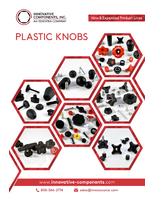FEI, OHSU Partner to Create a 'Living Lab for Cell Biology' with High-Performance Electron Microscopes for Disease Research
Among the goals of the scientific collaboration is to advance cancer research and foster next-generation research tools
PORTLAND, Ore. - FEI (NASDAQ: FEIC) and Oregon Health & Science University (OHSU) today announced a partnership to create the OHSU/FEI Living Lab for Cell Biology that will provide researchers with several state-of-the-art electron microscopes to advance the understanding and treatment of complex diseases such as cancer and AIDS.
The OHSU/FEI Living Lab will be equipped with a variety of high-performance equipment including a Titan Krios(TM) transmission electron microscope (TEM) and a Helios NanoLab(TM) DualBeam(TM). With these instruments from FEI, the Living Lab will have some of the most powerful imaging equipment available in any life sciences research lab in the Northwest.
The lab will be run by Joe Gray, Ph.D., a renowned cancer and genomic researcher recently recruited to OHSU from Lawrence Berkeley National Laboratory. Gray was one of the primary contributors to the development of the Fluorescence In Situ Hybridization (FISH) test that transformed how treatments are selected for breast cancer patients. He co-leads Stand Up To Cancer's Breast Cancer Dream Team, plays a key role in the Cancer Genome Atlas Project and is spearheading the use of computer models to predict how cancer cells grow so that targeted therapies can be developed to shut these cells down.
With the creation of the Living Lab, Gray and other OHSU scientists will be able to visualize cell structure at a level of detail that wasn't possible before, enabling them to explore, among other things, how cancer cells function differently as they spread from the site of origin to other parts of the body.
The collaboration will also help Hillsboro-based FEI gain an even deeper understanding of the total workflow of electron microscopy in cellular biology and, ultimately, develop next-generation tools. To that end, FEI scientists appointed to the project will partner with OHSU scientists who will share their expertise. The partnership will provide scientists in the Living Lab with access to early versions of next-generation microscopy systems so that they can contribute to the product development process. The focus of this work will be on the combination of electron microscopy with other imaging techniques, such as light and fluorescent (correlative) microscopy. This next-generation technology is being designed with the goal of making it possible for scientists to better understand the genetic mutations that drive cancer and other diseases and understand how these mutations work together.
The partnership was attractive to FEI because of the scientific foundation that was fostered at OHSU when it was awarded an electron microscope from the National Institutes of Health in 1997. Because of that history, and subsequent programs to build research programs around sophisticated imaging tools, a user base of highly experienced scientists already exists at OHSU. That user base of scientists has also grown over time as a result of initiatives between regional institutions, including Portland State University, to collaborate in the interest of advancing science.
These efforts to collaborate are being accelerated by philanthropic support, including the $100 million gift from Nike Chairman Phil Knight and his wife, Penny, to further the OHSU Knight Cancer Institute's mission to make personalized cancer therapy a reality for all patients, and an anonymous $40 million donation to help build the OUS-OHSU Collaborative Life Sciences Building on the South Waterfront. The microscopes in the OHSU/FEI Living Lab, which will have several locations, will be accessible to scientists throughout the Oregon University System (OUS). One of the locations will be a highly specialized, vibration-free research space that will be built in the basement of the future OUS-OHSU Collaborative Life Sciences Building.
"The Living Lab and the Life Sciences Building are evidence of what is possible when there is a close working relationship between business, OHSU and the other OUS institutions," said OHSU President Joe Robertson, M.D., M.B.A. "Working together, with the support of philanthropy, will ultimately improve Oregonians' health and the economic vitality of our community."
The OHSU/FEI Living Lab will be part of the OHSU Center for Spatial Systems Biomedicine that combines physics, biomedical engineering, chemistry and biology to study how cancer cells and other diseases grow. The multidisciplinary Center for Spatial Systems Biomedicine is, in turn, part of the OHSU School of Medicine and the
OHSU Knight Cancer Institute
The OHSU Knight Cancer Institute's expansion, with the creation of the Living Lab, comes as cancer research and treatment is entering a new phase that was ushered in when Brian Druker, M.D., director of the OHSU Knight Cancer Institute, discovered that cancer cells could be shut down by disabling the molecules that drive their growth. The drug that resulted from that research, Gleevec® - the world's first targeted cancer therapy - revolutionized the way cancer is treated. It also inspired a new wave of exploration into targeted therapies that zero in on cancer-causing molecules without damaging healthy ones.
"Much of biomedical research to date has focused on the form and function of the molecular components in the human body and how these components change during the development of diseases like cancer," said Gray, who is the director of the Center for Spatial Systems Biomedicine and associate director for translational research for the OHSU Knight Cancer Institute. "An important next phase of research will determine how normal and disease-linked molecular components are organized into cells, tissues and organs and how this information can be used to improve aspects of cancer management ranging from detection to treatment. This will require integration of results obtained using sophisticated measurement tools that enable quantitative analysis of the organizations of the molecular complexes, cells and tissues that comprise normal and diseased organs."
For FEI, the partnership will help further its goal of developing a broad range of tools to advance health care.
"FEI's goal for the Living Lab is to increase research productivity by providing directly interpretable information from its electron microscopy solutions so that scientists can more rapidly gain the knowledge necessary to advance medicine and save lives," stated Dominique Hubert, vice president and general manager of FEI's Life Science Division. "FEI's vision is that by making electron microscopy simple and efficient enough to use in a clinical environment, it will be able to provide insight to health-care teams that simply isn't available with techniques used today."
About FEI
FEI (Nasdaq:FEIC) is a leading diversified scientific instruments company. It is a premier provider of electron- and ion-beam microscopes and across many industries: industrial and academic materials research, life sciences, semiconductors, data storage, natural resources and more. With more than 60 years of technological innovation and leadership, FEI has set the performance standard in transmission electron microscopes (TEM), scanning electron microscopes (SEM) and DualBeams(TM), which combine a SEM with a focused ion beam (FIB). FEI's imaging systems provide 3D characterization, analysis and modification/prototyping with resolutions down to the sub-Ångström (one-tenth of a nanometer) level. FEI's NanoPorts in North America, Europe and Asia provide centers of technical excellence where its world-class community of customers and specialists collaborate. FEI has over 1900 employees and sales and service operations in more than 50 countries around the world. More information can be found at: www.fei.com.
About OHSU
Oregon Health & Science University is the state's only health and research university, and Oregon's only academic health center. OHSU is Portland's largest employer and the fourth largest in Oregon (excluding government). OHSU's size contributes to its ability to provide many services and community support activities not found anywhere else in the state. It serves patients from every corner of the state, and is a conduit for learning for more than 3,400 students and trainees. OHSU is the source of more than 200 community outreach programs that bring health and education services to every county in the state.




